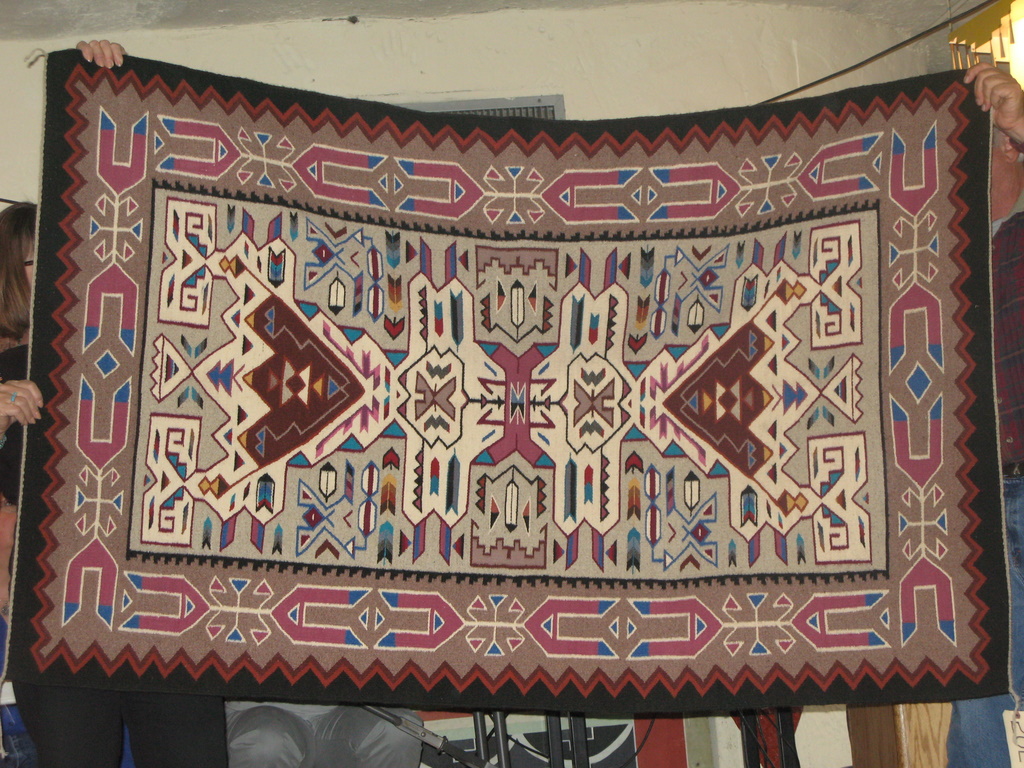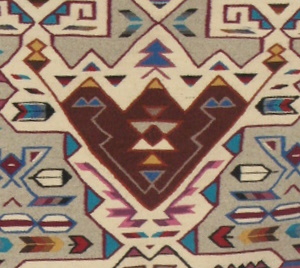Rug of the Day: The Teec Nos Pos Rug, a Closer Look
Tempe, AZ Teec Nos Pos (T’iis Nasbas or Cottonwoods in a Circle) is in northeastern Arizona near the Four Corners Monument and many people drive through on their way to Monument Valley, Mesa Verde or Canyon de Chelly. Teec Nos Pos is one of the 110 chapters that comprise the Navajo Nation, and the current chapter president is master weaver and Navajo-Churro shepherd Roy Kady. The regional pattern that bears the area name goes back to 1905 when Hambleton Noel came into the area and convinced the residents that he would be just the person to serve the community in the role of trader. Noel’s brothers had established the trading post at Two Grey Hills in 1897 and Hambleton looked to the rug designs that his brothers were marketing to provide the area weavers with a sense of what he wanted to buy from them. At the time, Oriental rugs competed with Navajo textiles for the consumer’s dollar and so it was natural for traders to encourage the production of something familiar to the rug buying public. It was just natural for the weavers to adapt that new geometry to their own culture. A close look at a Teec Nos Pos rug will show you what I’m talking about.
People will often comment that Teec rugs “look different” from other Navajo rugs without being able to put their finger on exactly why. A Teec is different from other regional styles. In fact, those closest relative to a modern Teec Nos Pos rug is a Two Grey Hills rug woven before 1940. Teec weavings are known for their very complex multiple borders and their dense and dazzling single panel designs. In most Teec weavings, no one design element has more visual weight that any of the others. With a Teec, your eye is drawn into the central panel rather than into a central design element. When you look closely at those design elements, you’ll begin to understand that this design is tied as closely to the Navajo culture as many Ye’i rugs. Weavers may have been told “Weave this”, but they took the rough geometry of the design and made it their own by using objects and motifs that reflected their world and their vision. This is easiest to see in the feathers that are frequently part of the pattern. More difficult to see are rainbows, arrows, bows and even Ye’i faces. In fact, there is what many Teec weavers call a Ye’i face in the beautiful Eileen Littleben Teec that you see above. Can’t see it? I’ll help you out. Do you see the two maroon triangular elements? Good. Now turn one of them vertical and you may begin to see two stylized eyes and a mouth. Can’t make it out? Look at the detail below. Let me know if you see it. The trader might have wanted and gotten a Teec Nos Pos to sell, but he also got a design that had a lot of what the weaver wanted to weave.
Hagoshíí (so long for now)
Mary Walker



Mary,
Thanks for educating us. Most of us would have missed the face and it is great to know the history behind the rug design. All the details are amazing. Teri
Mary – I love your rug of the day posts. A little mini lecture full of information. I can’t learn enough about this amazing art/craft and the people who developed it.
Thank you for these posts. I don’t recognize a face easily in those triangles; I see two faces though in the center of the rug.
Thanks, Sandy!
That was cool Mary.